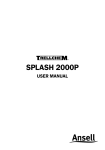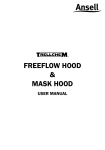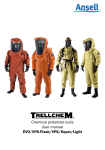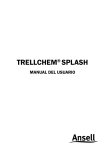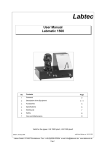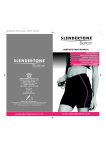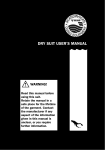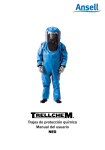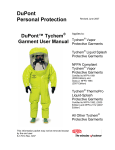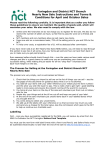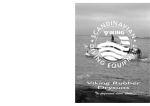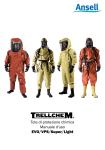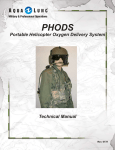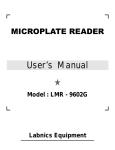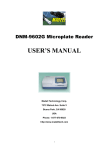Download TRELLCHEM® SPLASH - Ansell Protective Solutions
Transcript
TRELLCHEM® SPLASH USER MANUAL 2 Index IMPORTANT!........................................................................ 5 Certificates and approvals................................................. 6 Description of suits........................................................................ 6 EC type approval............................................................................ 6 Markings on the suit.......................................................... 7 Symbols/Pictograms...................................................................... 7 Sizes................................................................................................ 8 Other............................................................................................... 8 Suit material........................................................................ 8 Components........................................................................ 8 Gloves and glove attachment system........................................... 8 Footwear and attachments........................................................... 9 Visor, face seal and mask seal...................................................... 9 Undergarments................................................................... 9 Safety considerations......................................................... 9 Chemical response........................................................................ 9 Guidelines for use........................................................................10 Breathing apparatus (Splash 900, 1000, 1500 and 2000) ....10 Temperatures...............................................................................10 Antistatic properties.....................................................................11 Donning.............................................................................12 Splash 600...................................................................................12 Splash 900...................................................................................13 Splash 1000 and Splash 1000S................................................15 Splash 1500.................................................................................16 Splash 2000.................................................................................17 Doffing...............................................................................18 Storage instructions.........................................................19 Environmental conditions............................................................19 Suit storage methods...................................................................19 Storage life/Shelf life...................................................................19 3 Inspection..........................................................................20 Repair and maintenance..................................................20 Repair of suit - general................................................................20 Repair of punctures and minor damages...................................21 Trellchem Bayonet glove ring system - general..........................22 Replacement of rubber gloves....................................................24 Replacement of glove assembly (Ansell Barrier® inner glove plus outer rubber glove)..........................................................26 Maintenance instructions - Bayonet rings..................................30 Maintenance instructions - Face seal.........................................30 Maintenance instructions - Gloves.............................................30 Maintenance instructions - Overpressure valve.........................30 Spare part list...............................................................................31 Cleaning instructions.......................................................31 Decontamination guidelines............................................32 Volatile chemicals........................................................................32 Water soluble chemicals.............................................................33 Acids and alkali..................................................................................... 33 Water insoluble chemicals..........................................................33 Chemical warfare agents.............................................................34 Retirement and disposal..................................................34 Chemical and technical data...........................................35 Suit material data........................................................................35 Glove data.....................................................................................36 4 IMPORTANT! This manual is valid only for Trellchem® Splash. The suits may only be used by trained personnel that is familiar with the contents of this manual. A risk analysis must be performed to determine the protection level and type of protective clothing required before any work involving chemicals is performed. Failure to comply with any of the recommendations given herein may result in serious injury or death. Check the website http://protective.ansell.com for available updates and the latest edition of this manual. 5 Certificates and approvals General instructions for use, maintenance etc. are given below. Description of suits The Trellchem Splash range of suits consists of: • Splash 600 - Basic overall suit for liquid spray protection (type 4) • Splash 900 - Non-encapsulating liquid tight (type 3) suit for use with an SCBA • Splash1000 - Two-piece encapsulating liquid tight (type 3) suit for use with an SCBA • Splash1000S - Two-piece encapsulating spray tight (type 4) suit for use with an SCBA • Splash 1500 - Spray tight (type 4) coverall with hump for use with an SCBA • Splash 2000 - Encapsulating liquid tight (type 3) suit for use with an SCBA EC type approval Trellchem Splash 600, 1000S and 1500 are approved as type 4 / spray tight reusable full-body chemical protective clothing according to EN 14605:2005. Trellchem Splash 900, 1000 and 2000 are approved as type 3 / liquid tight reusable full-body chemical protective clothing according to EN 14605:2005. EC type examination has been performed by FORCE Certification A/S, Park Allé 345, DK-2605 Bröndby, Denmark, notified body 0200. 6 Markings on the suit Symbols/Pictograms This marking (CE-marking) indicates that the suit has EC type approval and complies with the Council Directive on Personal Protective Equipment 89/686/EC. Chemical protective clothing is category III according to the directive and 0402 is the number of the notified body that is responsible for production control. 0402 is SP, Sweden. This pictogram indicates that the suit offers chemical protection. This pictogram indicates that the suit offers protection against infective agents (EN 14126). This pictogram indicates that this manual has to be read. This pictogram indicates the size of the suit, see below. This pictogram indicates that the suit is only to be handwashed (max. 40°C/104°F). This pictogam indicates that the suit shall not be tumbled dry. 7 Sizes The size of the suit is indicated by letters XS-XXL and by indicating the size of the user in a pictogram as above. The figures in the pictogram indicate the height and the chest/bust girth of the user in centimetres. Available size range: Size range Height Chest/bust girth (cm) XS164-17684-92 S170-18288-96 M176-18892-100 L182-19496-104 XL188-200100-108 XXL200-212104-116 Splash 1000, 1000S and 1500 come as standard in size L, specially designed to fit ontop of turnout gear etc. of various sizes. Other sizes are available. Other Marking can be made with a “permanent marker” pen. Other means of marking may be available. Contact your supplier for advise. Suit material All Trellchem Splash suits are made from a PVC coated fabric. As an option Splash 600 can be made in the Trellchem Super material, which is a fabric coated with a combination of Viton® and butyl rubber. Components Gloves and glove attachment system The standard glove for Splash suits with attached gloves (Splash 900, 1000 and 2000) or separate gloves, is the Trellchem Butyl rubber glove. As an option, the Trellchem Viton®/Butyl rubber glove may be used. Both of these gloves may be used with the Ansell Barrier® inner glove. Gloves in chloroprene rub- 8 ber and PVC are also available. Information on the chemical resistance of the gloves can be found in chapter “Chemical and technical data”. Footwear and attachments Standard boots, fitted or separate, are PVC safety boots. Nitrile rubber boots are available as an option. Visor, face seal and mask seal • Splash 900 is fitted with a face seal moulded in natural rubber • Splash 1000 and 2000 are fitted with 1 mm soft PVC visor • Splash 1000S is fitted with an elasticated mask seal Undergarments For very cold weather and/or where there is a risk of contact with chemicals at very low temperature, insulating undergarments like the Trellchem Insulating Underwear that protect the user from frost bite, should be used. Also, the Trellchem suits can be worn ontop of firemen’s turnout gear. NOTE: Make sure you have the right size of suit depending on type of undergarment. Safety considerations All personnel should be acquainted with this manual before using the suits. Chemical response Responding to hazardous chemical emergencies can be a very complex task and may involve chemicals other than those stipulated as test chemicals in standards or in this documentation. Besides the specific chemical(s) encountered other aspects such as the concentration, temperature of the chemical, mixtures of chemicals, flammability, toxicity etc. have to be considered. Identify the chemicals before entering into the hazardous area in the chemical protective suit. Minimize the exposure to chemicals during the mission. Avoid direct contact with the chemicals as far as possible. 9 Guidelines for use Choosing the appropriate chemical protective suit, accessories and other necessary equipment to deal with a chemical emergency, has to be made by qualified safety professionals. Many types of work and work environments require the use of a helmet. Trellchem suits can be used with a safety helmet. The Trellchem chemical protective suits should be worn together with a safety boot with nailguard and steel toe cap. Make sure that someone is available to assist while donning, decontaminating and doffing. Also make sure that the suit is decontaminated and inspected before it is returned into service or storage. If the suit is damaged, take it out of service and repair or replace as required. Breathing apparatus (Splash 900, 1000, 1500 and 2000) For European users the breathing apparatus must be approved to EN 137. This includes a requirement (§ 6.15) for the regulator valve to have a design or position that it cannot be closed inadvertently. We recommend a breathing apparatus with a regulator valve that is designed in a way that an accidental turning of the valve alone is not sufficient to turn off the air. However, if the breathing apparatus to be used is equipped with a valve where fulfilment of § 6.15 has been achieved only by need of several full turns of the valve to close it, then the wearer should practice reaching the valve while wearing the suit. Temperatures All Trellchem Splash suits (except Splash 600LX) may be used in temperature ranges from -40°C to +65°C. Splash 600LX may be used in temperature ranges from -20°C to +65°C. Never use the suits near open flames or intense heat. The risk of heat stress must always be taken into account when working in coveralls and encapsulating suits. Depending on the type of work and clothing this risk may be considerable even at moderate ambient temperatures. 10 Antistatic properties Splash 900 Trellchem Splash 900 has been found acceptable for use in Dust Ex atmospheres of zones 20, 21 and 22 and in Gas Ex atmospheres of zones 1 and 2 (EU directive 1999/92/EC) for chemicals in explosion group IIA and IIB (IEC 60079) after evaluation according to EN 13463-1 and the ATEX Directive 94/9/EC. The approval is further limited by the fact that the suit should not be used in/near processes where strong electrostatic charges are generated, such as filling Styrofoam into packaging or rolling plastic films on or off rolls. The evaluation has been performed by Dekra Exam GmbH in Essen, Germany. The user is reminded that any other equipment used together with the suit also has to be suitable for use in potentially explosive atmospheres. The evaluated suit was made from the standard Splash 900 material, had attached PVC boots and Nitrile/Chloroprene gloves. For suits without attached boots the same Trellchem PVC boot or another approved dissipative boot has to be used. The use of Trellchem Kevlar® over gloves is approved, however these gloves are not electrically conductive so e.g. hand held metal tools may require additional means of grounding. For added safety the suit may be sprayed with water before and during use. Splash 600, 1000, 1500 and 2000 Splash 600, 1000, 1500 and 2000 suit materials as well as the Trellchem Super and Light material options fulfil the EN 1149-5 §4.2.1 (material requirements for protective clothing with antistatic properties). NOTE: The data is only valid for the suit material. IMPORTANT: This information is not a claim that the complete garment is antistatic or in any way safe to use with flammable liquids or vapours or explosive atmospheres. The European standard on antistatic properties of clothing, EN 1149, does not specify any method to evaluate a complete garment. If static charges are a concern the suit may be sprayed with water before and during use to minimize the risk of static charges accumulating. 11 Donning For all suits we recommend that one person is available to assist when donning the suit. This person should make sure the suit is properly fitted and that all zippers, drawstrings and flaps are correctly positioned, closed and pulled tight so they protect and prevent leakage. It is also important that the wearer has selected the right size of suit in order to prevent liquid leakage. It is important that the procedures below are followed in order to obtain the proper full body protection. NOTE 1: All suits with open legs and sock/booties must be worn with safety boots. NOTE 2: All suits must be worn with liquid tight chemical protective gloves. NOTE 3: The hood of a Splash 600 or 1500 cannot be guaranteed to provide a completely tight seal to a face mask. If complete protection against liquids is required, a suit with an integrated visor should be selected. Splash 600 Please note that Splash 600 does not offer protection of the face. It is important that the neck flap is properly closed and that the hood drawstring is pulled tight around any face/respiratory protection to achieve protection in this area. The opening in the face/neck area may allow leakage into the suit if the face/respiratory protection does not fit tightly in the hood or if no face protection is worn. Splash 600 also comes in a version with a stand-up collar. This suit does not offer protection for the head and therefore it is recommended to use a separate protective hood, for example Trellchem Freeflow Hood. Donning procedure Step into the legs of the suit and put the arms into the sleeves of the suit. For suits without attached boots, put on the boots as described below. • Open leg with elastic: Put on the boots and pull the suit leg down over the boot and as far down as possible. • Open leg with press studs or Velcro: As above, then tighten around the boot using the press studs or Velcro. 12 • Open double leg with elastic: There is an elastic strap across the opening at the end of the inner leg which must be positioned underneath your foot. Pull up the outer part of the double suit leg. The inner part of the double leg goes inside the boot. Put on the boot. Pull down the outer suit leg over the boot as far down as possible. • Sock versions: Don the boot taking care the splash guard goes outside the boot shaft. Pull down the splash guard over the boot. Put on face/respiratory protection, if any. Close the zipper and the flaps on top of it. Make sure the flaps cover the zipper completely to prevent leakage. Let the assistant pull the drawstring and make sure the hood is tight around any face or respiratory protection worn. Close the neck flap. Put on gloves. Make sure there is a good overlap where the sleeve covers the glove shaft. Tighten the sleeve straps and secure them with the touch-andclose fasteners. This is important to prevent leakage and it is recommended that the assistant does this. For suits fitted with the Bayonet ring system: If the gloves are not in place already, let the assistant attach the gloves and secure the Bayonet ring system with the red locking pin. Splash 900 The Splash 900 is designed to be used with an SCBA or other respiratory protective equipment with a full face mask. The Trellchem Mini Hood must be worn with the Splash 900 to make sure full liquid tight splash protection is achieved in the face piece/face seal interface. Make sure the gloves are attached in the Bayonet ring system (see chapter “Trellchem Bayonet glove ring system - general”) on the suit or that gloves prepared for bayonet attachment are available. 13 Donning procedure The Splash 900 is a rear entry suit with a liquid tight zipper in the upper back. Step into the legs of the suit and put the arms into the sleeves of the suit. Pull the hood over your head. For suits without attached boots, put on the boots as described below. • Open double leg with elastic: There is an elastic strap across the opening at the end of the inner leg which must be positioned underneath your foot. Pull up the outer part of the double suit leg. The inner part of the double leg goes inside the boot. Put on the boot. Pull down the outer suit leg over the boot as far down as possible. • Sock versions: Don the boot taking care the splash guard goes outside the boot shaft. Pull down the splash guard over the boot. Let the assistant close the zipper and position the splash protective flap on top of the zipper. Put on the facemask starting at the chin and make sure the facemask tightens against the face seal of the suit (not the suit material). Pull the harness over the head and tighten the straps. Have the assistant check the mask position and make sure there are no folds on the face seal, which can cause leakage. Put on the Trellchem Mini Hood. If the gloves are not in place already, let the assistant attach the gloves and secure the Bayonet ring system with the red locking pin. 14 Splash 1000 and Splash 1000S These suits are designed to be used with an SCBA. See note on SCBA in chapter “Safety considerations”. It can be worn on top of fire protective clothing/turn-out gear. Before donning This is a two-piece suit and it is important to have a good overlap between jacket and trousers. Therefore, make sure to adjust the suspenders so that the waist of the trousers is as high up as possible. The optimum setting of the suspenders may vary with user. Make sure all zippers are open. The visor should be treated with antifog gel (art. no. 069 000 710). Put on boots and SCBA before donning the suit. Donning procedure - Splash 1000 Don the suit by stepping into the trousers and putting the suspenders over your shoulders. The assistant should make sure the lower part of the SCBA cylinder goes inside the upper part of the trousers. Pull down the zippers at the lower end of the legs. Put on the jacket by pulling it over your head and inserting the arms into the sleeves. Put your hands into the gloves. Pull down the lower back part of jacket over the SCBA cylinder, overlapping the trousers. Close the zippers on each side of the jacket. Donning procedure - Splash 1000S Follow the instructions for Splash 1000. When donning the jacket the assistant must pull the elasticised opening in the hood around face mask visor frame. The jacket will fit an Interspiro Spiromatic face mask. Verify the fit of any other type of mask before use. Any accessories that are attached onto the face mask visor frame may interfere with the jacket to mask seal. 15 Splash 1500 1. Attach the Hose Drop Stop on the demand hose. Make sure the wide part faces the face mask. See photos below. 2. Put on the SCBA except the face mask. 3. Put on the suit and have someone helping to pull it over the SCBA cylinders. Do not close the zipper. 4. Pull the demand hose through one of the chest openings/slits. Choose the side that fits your SCBA configuration best: a) If the mask has a quick connection to the hose, disconnect it and pull the hose through the slit from inside to outside. Connect it to the mask. b) If the mask is fixed to the hose, carefully pull the entire mask through the slit from inside to outside. 5. Put on the mask. 6. Close the zipper fully. 7. Fit the hood carefully around the face mask. NOTE: Splash 1500 does not offer protection of the face. It is important that the neck flap is properly closed and that the hood elastic fits tightly around 16 any face/respiratory protection to achieve protection in this area. The opening in the face/neck area may allow leakage into the suit if the face/respiratory protection does not fit tightly in the hood or if no face protection is worn. 8. Close the zipper splash guard and chin flap. 9. Put on gloves (if separate) and close the Velcro fasteners on the sleeves. 10. Position the hose in the upper end of the slit opening. Make sure the wide part of the Hose Drop Stop is outside the slit and the thin part is positioned in the slit. Close the Velcro carefully and tight around the thin part of the Hose Drop Stop. See photo below. 11. Ready. Splash 2000 The Splash 2000 is designed to be used with an SCBA. See note on SCBA in chapter “Safety considerations”. The visor should be treated with antifog gel (art. no. 069 000 710) before donning. Donning procedure Step into the legs of the suit. 17 For suits without attached boots, put on the boots as described below. • Open double leg with elastic: There is an elastic strap across the opening at the end of the inner leg which must be positioned underneath your foot. Pull up the outer part of the double suit leg. The inner part of the double leg goes inside the boot. Put on the boot. Pull down the outer suit leg over the boot as far down as possible. • Sock versions: Don the boot taking care the splash guard goes outside the boot shaft. Pull down the splash guard over the boot. Put your right arm into the sleeve, pull the hood over your head and put your left arm into the sleeve. If the gloves are not already in place already, let the assistant attach the gloves and secure the bayonet system with the red locking pin. Let the assistant close the zipper and position the splash protective flap on top of the zipper. Doffing Make sure there is assistance available for decontamination and doffing. In principle, the suits may be doffed by going through the instructions above in the reverse order, however the following must be considered: The optimum doffing procedure for this equipment will be specific not only to the design of protective clothing but to the facilities available, the nature and availability of decontamination measures, the degree and nature of the contamination and to local working practices. It is therefore not possible to specify a unique doffing procedure for this product. Users are, however, strongly encouraged to develop and validate their own workplace doffing procedures in order to establish that wearers, in their own specific doffing environments and subject to their own training regimes, can safely be extricated from the protective clothing without becoming contaminated from the outside surface of the suit. 18 Storage instructions Environmental conditions • Dry, humidity 50 ± 30% • Room temperature, 20 ± 5°C • Away from direct sunlight • Away from ozone-generating sources, for example electrical engines, fluorescent lamps and air-conditioners Suit storage methods The suit should be stored: • Folded as upon delivery or hanging • In the plastic bag delivered with it or in another tight bag or box • If stored in a soft bag, never store suits on top of each other, as too much weight or high pressure may damage the visor • If stored in a box, make sure the box is large enough to easily accommodate the suit without pushing, pressing or squeezing it • If stored hanging, suits with boots should have the boots on the floor to avoid excess strain on the shoulders • If stored folded, the face seal on Splash 900 suits should be as flat as possible, avoiding sharp folds NOTE: When stored the suit should be unfolded and inspected once a year. Storage life/Shelf life Trellchem Splash suits: 7 years The storage/shelf life applies under optimal storage conditions (see above) and does not form a guarantee. The storage/shelf life may be exceeded or less than the above stated. Therefore the condition of the suit needs to be checked regularly to evaluate whether it is in good condition or not (see below). 19 Inspection The suit is to be inspected upon delivery, after each use and after repair or, if not used, annually. The inspection shall consist of the following steps: • Visual inspection of both inside and outside. • Look for surface damages on material, seams, face seal or visor (if fitted), boots and gloves. • Look for changes in the material properties such as brittleness, stiffness, swelling, stickiness or other phenomena which could be evidence of chemical degradation or aging. • Check function of zipper and zipper fitting. • Check the function of exhaust valves (if fitted). Make certain that they are firmly mounted and not damaged. If any defect/malfunction is found, the suit must be taken out of service. Minor repairs may be done according to the instructions below. Any repair or replacement of parts other than those described in “Repair and maintenance” may only be performed by a certified Trellchem dealer or by Ansell Protective Solutions AB. Repair and maintenance Repair of suit - general Always use original Trellchem parts when repairing. WARNING: Measures must be taken to avoid inhalation of the fumes from the solvent and the glue. Make sure that the working area where repairs are to be carried out is properly ventilated. The Trellchem repair kit can be used for repair of punctures or minor damages. NOTE: After repairs the suit must be left for 24 hours to allow glue to dry. To assure safe working order and to maintain the Ansell warranty, major repairs such as large tears, replacement of zipper, visor etc., shall be done by a Ansell certified repair centre or by Ansell Protective Solutions AB. 20 Damages should always be patched on both the inside and the outside. Start with the inside. Select an appropriate patch, one that is large enough to cover the puncture with a margin of at least 15 mm around the damage. In all instances, the area to be repaired must be clean and dry before application of adhesive and patch. Repair of punctures and minor damages Trellchem Splash repair kit for suits made in PVC material: 1 tube of PVC glue 1 bottle Trellchem solvent 1-1197, 250 ml for cleaning 1 set Trellchem repair patches 1 brush Viton®/Butyl - Trellchem Super repair kit (art no 487 080 073), for Splash suits made in Trellchem Super material: 1 can Trellchem adhesive 6-0724, 125 ml 1 bottle Trellchem hardener 1-7869, 8 ml sufficient for 125 ml adhesive 1 bottle Trellchem solvent 1-1197, 250 ml for cleaning 1 set Trellchem repair patches, yellow for outside and orange for inside 2 brushes 1. Trellchem Super material only: Add the hardener to the glue. Mix thoroughly. This mixture must be used within two hours. 2. Select a patch which is large enough to cover the damage with a margin of at least 15 mm around the damage. Position the patch accordingly and mark the position with a pen. 3. Clean the patch and the hood material with Trellchem solvent 1-1197. 4. Apply a thin layer of the glue to the damaged area and to the patch. Allow to dry 5-10 minutes, until it is tacky. 5. Repeat step 3, applying a second layer of glue. Let dry until tacky. 6. Apply the patch over the damage, starting from one end to avoid wrinkles. 7. Smooth with a hand roller or any other appropriate tool. 8. Repeat this procedure for the outside of the hood. 21 Trellchem Bayonet glove ring system - general Closed position Green marks opposite white marks. To open the system and detach the glove assembly, remove the red locking pin, push the two rings together and twist counter clockwise until the white marks meet. Open (detach/ attach) position White marks opposite white marks. To attach the glove ring, match the white marks, push the two rings together and twist clockwise until the white marks meet the green marks. Insert the red locking pin. 22 O-rings K72 000 611 O-ring for the glove ring. K72 000 606 O-ring for the sleeve ring. When assembling the Bayonet ring system for the first time, lubricate the groove and the O-ring with Molycote lubrication. Apply Molycote all around the groove and then put the O-ring into place. Use a small paint brush to spread the grease evenly. This lubrication may have to be repeated after cleaning. NOTE: This procedure should be performed on both sleeve ring and glove ring. 23 Replacement of rubber gloves Parts required (per suit) Glove ring K73 103 565 (plus O-ring), 2 pcs Inner ring, black, K73 103 580, 2 pcs Butyl rubber gloves K72 250 200, 1 pair, or Viton®/butyl rubber gloves K72 250 300, 1 pair 1. Push the black inner ring into the glove. Position it approximately 5 cm (2 inches) into the glove. 24 2. Push the glove through the glove ring and align the thumb of the glove with the green mark on the glove ring. Push it firmly into place using your thumbs. See “Open (detach/ attach) position” for instructions on attaching the glove/ glove ring assembly onto the suit. 3. Detach the glove by going through these steps “backwards”. 25 Replacement of glove assembly (Ansell Barrier® inner glove plus outer rubber glove) Parts required (per suit) Glove ring K73 103 565 (plus O-ring), 2 pcs Ansell Barrier® inner glove with black inner ring K72 251 465, 1 pair Butyl rubber gloves K72 250 200, 1 pair, or Viton®/butyl rubber gloves K72 250 300, 1 pair 1. Only barrier inner gloves that are delivered on a ring can be used. 2. Remove the white protective film on each finger of the inner glove. This will uncover a sticky area that will hold the inner glove in place and keep it inside the outer glove when the hand is retracted. 26 3. Push the inner glove into the outer rubber glove. Make sure all fingers of the inner glove come into position all the way inside the fingers of the outer glove. 4. Press the fingers of the outer and inner gloves together so that they stick together. 27 5. Push the ring of the inner glove approximately 5 cm (2 inches) into the rubber glove. 6. Put one hand inside the gloves and curl a fist. At the same time, put a finger of the other hand between the ring and the outer glove to release air that is trapped between the gloves. 28 7. Push the glove through the glove ring and align the thumb of the glove with the green mark on the glove ring. Push it firmly into place using your thumbs. See “Trellchem Bayonet glove ring system general” for instructions on how to attach the glove ring/glove ring assembly onto the suit. 8. The gloves can be detached by going through the applicable steps above “backwards”. The inner glove will stick to the outer glove but this can be overcome by using a little force. You may try one finger at a time and/or turning the outer glove inside-out if you have problems detaching the inner glove. 29 Maintenance instructions - Bayonet rings The Trellchem Bayonet ring system includes two Viton® O-rings and a safety locking pin. The Viton® O-rings should be replaced when broken or at least every 5 years. For optimal performance the O-rings must at all times be lubricated. If not, the Bayonet ring system will be difficult to close and there is a risk of damaging the O-rings. Therefore, it is recommended to lubricate O-rings with Molycote lubrication after every use. The safety locking pin should be replaced when worn out. When functioning properly, the safety pin “snaps” in place when pushing it with a finger. The pin may after repeated use become too easy to push in place, and must then be replaced. Maintenance instructions - Face seal If the suit is fitted with a face seal, it should be replaced if attacked by ozone, or at least every 5 years. Check the face seal for ozone cracks by stretching the material strongly. Ozone cracks are easy to identify since they always occur perpendicular to the stretching direction. Maintenance instructions - Gloves Rubber gloves can be decontaminated and reused in the same way as the suits. The barrier inner glove is regarded as disposable and should be replaced after use. Maintenance instructions - Overpressure valve The overpressure valve should be replaced every 5 years. 30 Spare part list COMPONENT ARTICLE NUMBER Viton O-rings, for sleeve ring (10 pcs) K72 000 606 Viton O-rings, for glove ring (10 pcs) K72 000 611 Molycote lubrication K69 095 005 Safety locking pin K73 103 585 Face seal K72 502 000 Overpressure valve K72 131 200 ® ® Cleaning instructions Handwash. Machine wash is not recommended. Tumble-dry is not allowed (it may damage the suit). Washing temperatures up to 40°C (104°F) may be used. Use a mild detergent and a piece of soft rag or a smooth brush. Care should be taken not to scratch or damage the material. Let the suit airdry or use a fan. Persistent stains of oil or other substances may be washed off with alcohol/ ethanol. If this is not effective a solvent like white spirit may be used carefully. Take care not to use more solvent than necessary. After this the suit should be rinsed with lukewarm water with mild detergent followed by water. It is important to dry the suit both inside and outside. Drying can be made by hand using a cloth or with a fan/hair dryer. 31 Decontamination guidelines No general decontamination procedure exists, the best way to decontaminate must be decided for the specific chemical encountered. This decision may only be taken by people educated for this task and with a good knowledge of chemistry. Ansell Protective Solutions AB may be contacted for advice. As a first rule a pre-decontamination must always be performed before doffing the suit - the safety of the wearer is the most important! This predecontamination should include rinsing with large amounts of water, if possible containing a detergent. After this initial procedure the real decontamination can take place and since all chemicals can be divided into groups, depending on chemical and/or physical properties, the following three groups are the most relevant when it comes to decontamination: • volatile • water soluble or reacts with water • water insoluble Depending on which group a chemical falls into, the decontamination procedure will be different, see the following descriptions. A special group of chemicals are the chemical warfare agents, for which we recommend a special decontamination procedure, see below. Volatile chemicals Chemicals that have lower boiling temperature than 80°C are regarded as volatile. These are typically solvents like ethyl acetate, heptane, benzene, chloroform, acetone and many others. To decontaminate a suit which has been in contact with a volatile compound you air the suit outdoors or in a well-ventilated area, if possible at a slightly elevated temperature (30-40°C). Hang the suit with the zipper fully open and enough space around it, so that the air can flow freely around the suit. The 32 required time for ventilating the chemicals depends on the temperature and airflow rate around the suit. After having aired the suit check for odour/smell of the chemicals and/or test the air for residual chemicals by using simple gas detecting tubes. Water soluble chemicals Chemicals that have higher solubility than 60 g/l water are regarded as watersoluble. Also, the solubility is dependent on the temperature; an increase in temperature increases the solubility. Examples of water-soluble chemicals are: phenol, ethylene glycol, sodium, all acids and alkali (see further below). When decontaminating a suit which has been in contact with a water-soluble compound you rinse the suit thoroughly with water, preferably with some added detergent. To further enhance the solubility you can use warm water (40°C). Acids and alkali Examples: sulphuric acid, hydrochloric acid, sodium hydroxide, ammonium hydroxide. Since both acids and alkali are soluble in water, a suit which has been in contact with either one of them should be rinsed with water. Residual acid may first be neutralised with a dilute solution of alkali and vice versa for residual alkali. Afterwards, rinse thoroughly with water with some added detergent. The pH should be checked during the decontamination, when the pH is neutral the decontamination is finished. pH can easily be checked with a pH-stick. Water insoluble chemicals Chemicals that are not water-soluble are soluble in some type of solvent, for example alcohol or white spirit. Chemicals that have lower solubility than 60 g/l water are regarded as water insoluble. Examples are: styrene, pyridine, nitrobenzene, diesel and crude oil. 33 If the suit has been in contact with a water insoluble compound you wipe the suit thoroughly with a cloth soaked in alcohol or white spirit (depending on what solvent will solve the chemical). Afterwards, rinse thoroughly with water with some added detergent. There are chemicals that are so sticky it is more or less impossible to get the suit completely clean. If this occurs the suit must be scrapped. Chemical warfare agents To decontaminate chemical - and also biological - warfare agents we recommend using a 30% water slurry of calcium hypochlorite (also known as chloride of lime or HTH). The suit is washed with the slurry and the slurry is allowed to react with the agents for about 15 minutes before it is washed off with water. After this procedure the suit is washed thoroughly with lots of water, preferably with some added detergent. Retirement and disposal The suit has to be replaced when worn out, damaged beyond repair or after being exposed to undecontaminable chemicals. If changes in the material properties (brittleness, stiffness, swelling, stickiness or other phenomena) are found, the suit should be taken out of service immediately and replaced. In doubtful cases contact your supplier or Ansell Protective Solutions AB. Worn out suits should be disposed of according to local regulations for PVC, PVC coated fabrics and/or rubber coated fabrics. Incineration is recommended. Suits that are not completely decontaminated must be disposed of in a safe manner, taking local regulations for the specific chemical into account. 34 Chemical and technical data Suit material data A = Splash 600 B = Splash 900/1500/2000 C = Splash 1000/1000S D = Light material option E = Super material option F = Splash 600LX PROPERTY A B C D E*** F Abrasion resistance 6 6 6 6 6 1 Flex cracking 6 4 4 6 6 6 Flex cracking at -30°C 2 4 2 6 6 - Tear resistance 4 6 2 4 3 2 Tensile strength 6 4 6 6 6 3 Puncture resistance 3 2 3 4 3 2 Resistance to flame 3 2 3 3 3 2 Limited flame spread index* - 1 1 - Yes Yes Yes Yes Yes 6 5 6 6 6 5 6 Antistatic properties (EN 1149-5)** Seam strength 1 4 Resistance to permeation, suit material -Dimethyl formamide 1 -Hydrochloric acid 37% -Methanol 3 1 6 -Sodium hydroxide, NaOH 6 6 6 6 6 6 -Sulphuric acid, 98% H2SO4 2 0 4 4 6 1 Resistance to permeation, seams -Dimethyl formamide 1 -Hydrochloric acid 37% 6 -Methanol 6 1 1 6 -Sodium hydroxide, NaOH 6 6 6 6 6 6 -Sulphuric acid, 98% H2SO4 3 1 3 3 6 1 *Acc. to EN ISO 14116 (not part of EN 14605 requirements) **See “Antistatic properties”, page 11 (not part of EN 14605 requirements). ***For more chemical data, see the manual for Trellchem EVO/VPS-Flash/VPS/TS/TL. For more chemical information, see the Trellchem Resistance table. 35 Glove data CHEMICAL BUTYL VITON®/ BUTYL ANSELL BARRIER INNER GLOVE Acetone 6 6 6 Acetonitrile 6 6 6 Ammonia 6 6 Carbon disulfide 6 6 Chlorine (gas) 6 6 Dicloromethane 3 6 Diethylamine 3 3* Ethyl acetate 4 6 n-Hexane 4 6 6 Hydrogen chloride (gas) 6 6 Methanol 6 6 Sodium hydroxide, 40% 6 6 Sulphuric acid, 96% 6 6 Tetrahydrofuran 1 6 Toluene 6 6 *Barrier inner glove in combination with Viton®/Butyl rubber glove. Using barrier inner glove, the above data will be the minimum protection level to be expected. The test data is based on the barrier inner glove alone, except for diethylamine. 36 37 ANSELL 1507. Subject to change without notice. Ansell Protective Solutions AB Johan Kocksgatan 10, SE-231 81 Trelleborg, Sweden Tel: +46 (0)10-205 1800, Fax: +46 (0)10-205 1840 http://protective.ansell.com | [email protected] Trellchem® is a registered trademark owned by Trelleborg AB. Viton® is a registered trademark of Dupont Performance Elastomers LLC. © 2015 Ansell Limited. All Rights Reserved.








































